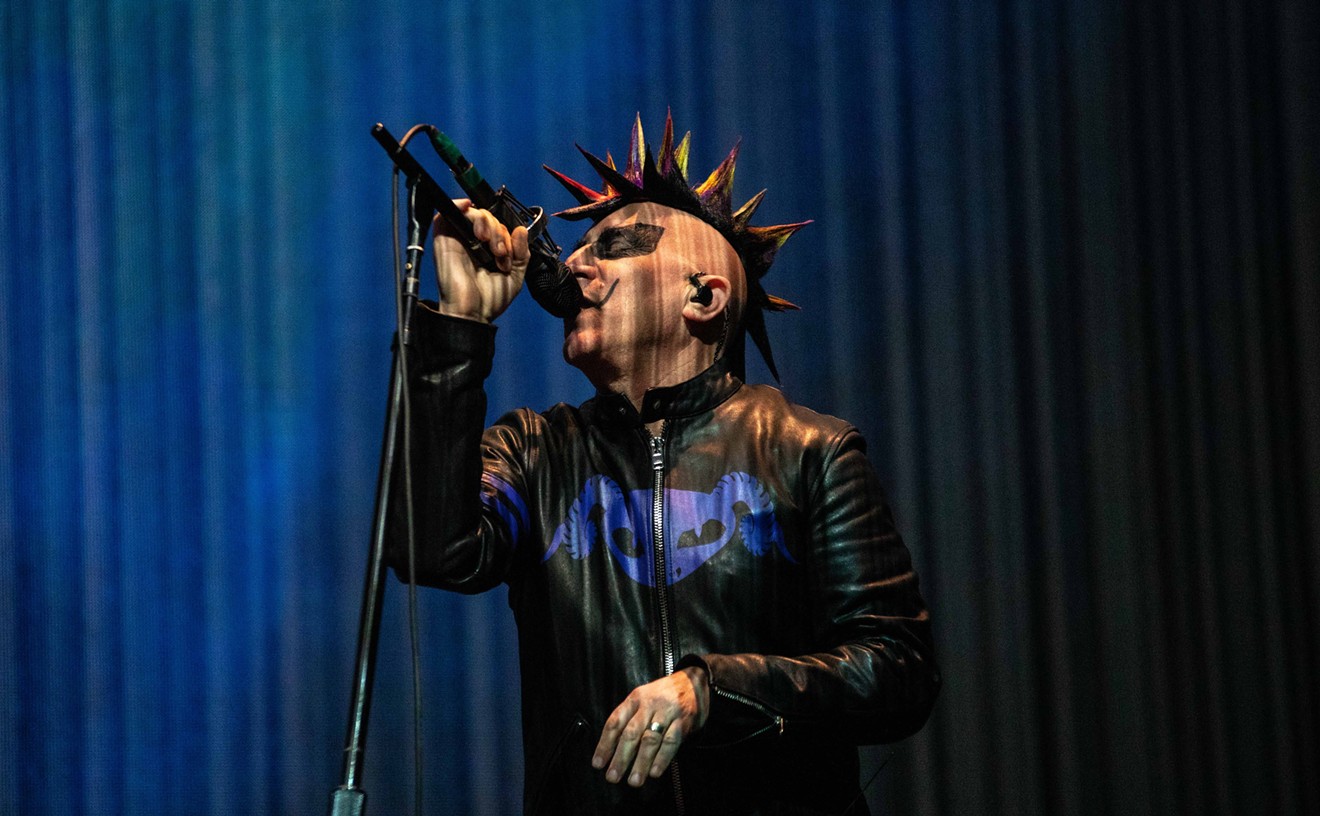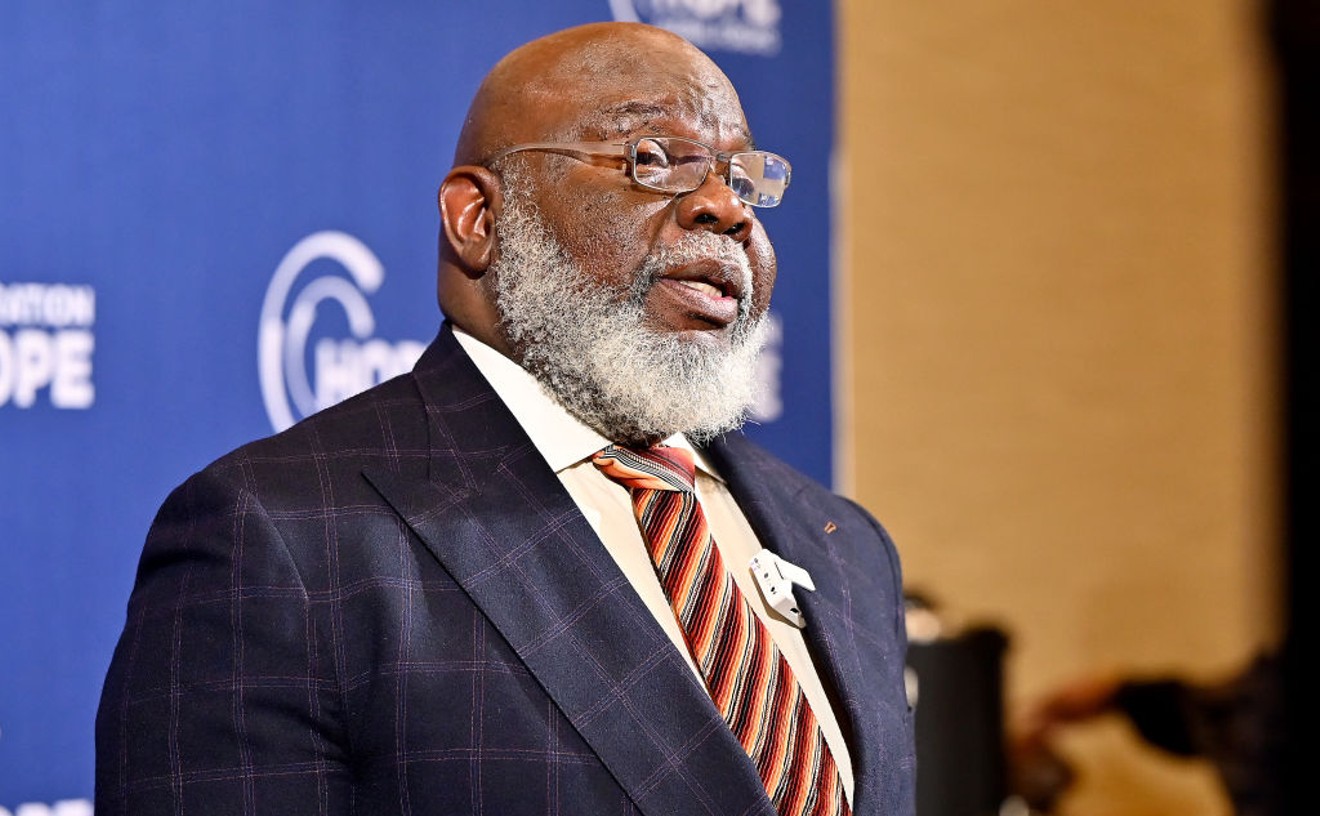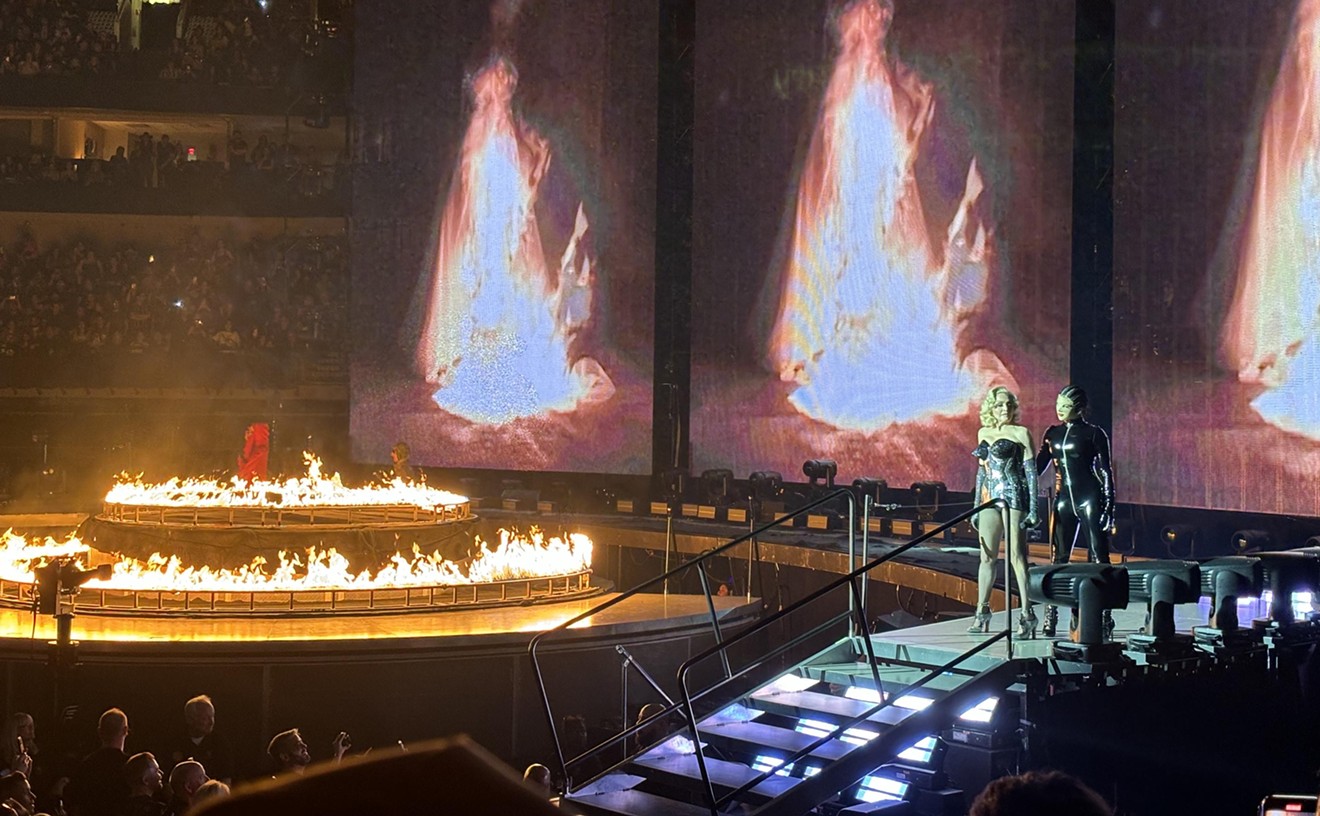Most people have heard of psychedelic rock -- a mid '60s music closely associated with the psychedelia counterculture. But what you might not know is that its roots started right here in Texas, with 13th Floor Elevators frontman Roky Erickson first using the term almost fifty years ago in 1965. Since then the psych tag has taken on a life of its own, splintering into a countless array of sub-genres, scenes and new musical trends. Still, nothing's been quite like the classic psychedelic rock from the early period. From its first steps to Austin's internationally attended Psych Fest, Texas has always been at the heart of psychedelic rock (regardless of what the West Coast says). In celebration of this fact, but mostly just because it's really, fucking good music, we're running down our ten favorite Texas psychedelic rock records (in reverse order).
10. Green - Green Let's start with a Dallas band. Green fall into the pop side of the psych spectrum, borrowing more from British folk and The Kinks than from the heavy end, as most Texas psychedelic rock did. The moods are light and the atmospheres hazy. As a result, the tracks are gorgeously enchanting, especially on repeated listens. While the songs don't exactly cut deep, the set's sleepy currents, wistful tone, and tasteful horns have an uncanny knack for pulling the listener into Green's euphoric ebb and flow.
9. Power Plant -- The Golden Dawn When people think of psychedelic rock they're usually thinking about records like Power Plant. It's in albums like this that fleets of neo-psychedelic bands found a way to earn extra money on the weekends (or get a an 8.5 score in Pitchfork, whatever). All the kitschy characteristics are here - wobbly tape effects, lyrics concerning new age spirituality, fey strumming - but damn, did these Austin boys make a nice package out of it. The melodies take weeks to leave the blood stream, making it a far better deal than the countless joints rolled on its trippy, floral jacket.
8. Creation, a Child - Corpus Corpus Christi's Corpus eschewed hippie psych rock's ornate structures, opting for slow burning metallic-infused psych instead (with some rockabilly thrown in for good measure). Apart from the spidery guitar solos, Creation, a Child's sounds tend to drift, linger, then settle, making them more trance-like than - as with most psych rock - kaleidoscopic. In short, these guys were listening to a lot of Zeppelin and Sabbath. The lyrics center on love and longing ("Marriage," "We Can Make It, Luv," "Where is She"), and while that may seem cliche, the delivery is of such genuineness that their poignant, not hackneyed.
7. Thank You All Very Much - Endle St. Cloud Through acid-folk, oddball saloon piano (featured on every other track) and a general campfire feel, Endle St. Cloud produced the strangest record on the famed Texas psych label International Artists. There's an unsettling schizophrenic musk here - pianist Endle St. Cloud bounces across identities on several interspersed monologues - that evokes the same feel-good cultism that made The Wicker Man so illogically grotesque. Granted, it's not all spiraling pinwheels and eerie exoticism, there's an enchanting Kinks-like pastoral quality as well, but one can't shake the obtuse modernism that underpins Thank You All Very Much, a feature that makes it one of the most distinctive artifacts in the history of psychedelic rock.
6. Up through the Spiral - Playboys of Edinburgh Classic psychedelic rock unwittingly laid the groundwork for contemporary psychsters Spaceman 3; a group whose anthem was "Taking drugs to make music to take drugs to." That is, traditionally, psych rock aimed to emulate and enhance the hallucinatory conditions brought on by psychedelic drugs. What P.O.E did with Up Through the Spiral is altogether more bizarre than that. This is what it's like to be hypnotized by a snake oil prophet. As the liner notes read: "The lyrics in this CD were inspired by the philosophy in the Edgar Cayce Readings. It is hoped that these concepts will provide stimulation for thoughts and possibly insight into man's attempt to understand himself." Concept and lyricism: needlessly weighty; music: stunning. Anchored by an Abby Road era Beatles aesthetic and a liberal slathering of reverb, the songs soar and break, wane and wax, doing what only the best psychedelic rock records can: balance camp with authenticity.
5. Dead Man - Josefus Dead Man is fuzzy proto-metal flecked with enough THC to give you a contact high. It was released on a label called 'Hookah Records,' and it has a skull on the cover. Thankfully, it sounds just as you would expect -- like shrapnel guitars produced on gravel 8-tracks and played by Syd Barrett's inner circle. And I don't mean those dunces that left him for cash and fame, I mean the loyal reptilian critters that made up his headspace; ya' know, those space cadets that etched 'Masterpiece' all over The Piper at the Gates of Dawn. In a stroke of genius these Houstonites slapped a 26:00 minute live track right on the end of the album; good thing, because music like this always finds its stride in boiling blood and waves of sweat.
4. Flash - The Moving Sidewalks Despite opening for both The Doors and Jimi Hendrix, The Moving Sidewalks are best known for guitarist Billy Gibbons, who went on to form ZZ Top. Heady blues and smoldering guitar-play should have been their legacy, and for my money I'll take these cuts over the ZZ Top discography any day. On their sole release, the group are admittedly a few fro's short of full-on Hendrix plagiarism ("Pluto Sept. 31st" is basically Jimi's "Fire") and the set is uneven to say the least, but the tracks that hit true sink deep. The organ-led "You Don't Know the Life" is gorgeous and languid, wilting as it blossoms, echoing romanticism and fatalism all at once. "Crimson Witch" is a slow-cooked garage number that opens into stoned vistas with flights of watercolor guitar. And "Joe Blues" sounds like the emotionally panged Dylan/Hendrix collaboration that never happened. The set closes with a two-part sound-collage (tape effects, cubist edits, etc) that wears Lenon's stamp like a merit badge, but the result is so delightfully twisted it's dazzling all the same.
3. American Blues Is Here - American Blues As you might have guessed, this is blues rock. But it's blues rock with one foot in that other place, that void where dreams, visions and ideas go to commingle. Without question, this is Dallas' best slab of golden era Psych. Each note lingers in a medicine daze; each wail wades in a swamp of lunar static--with the vocalist finding a halfway point between V. Morrison and J. Morrison. After a fleeting glimpse of fame and a heft of local notoriety, bassist Dusty Hill and drummer Frank Beard split off and joined The Moving Sidewalks' Billy Gibbons, resulting in the formation of ZZ Top.
2. The Psychedelic Sounds of the 13th Floor Elevators - The 13th Floor Elevators Seminal would be an understatement. This is the blueprint, the record that set a million minds on fire. Released in August 1966, The Psychedelic Sounds of the 13th Floor Elevators was the first instance where a band used the term "psychedelic" to describe a record's sound (brainchild/singer Roky Erickson also coined the term "Psychedelic Rock"). What The 13th Floor Elevators did with this, their debut, was find new angles in rock, new wrinkles to exploit and expand. With a half-magic, half-art inventiveness that influenced Jimi Hendrix, Pink Floyd, and surely folded back on The Beatles, The Elevators made music to soundtrack an entire counterculture bent on collecting narcotic experiences. There's a hyper realness to the sounds on here - the timbres seem to vibrate, suggesting movement in actual physical space - which makes their effect both more immediate and surreal. Going the subtle route, the production on The Psychedelic Sounds is only implicitly reflective of psychoactive imagery, and it's all the more revelatory for it.
The guitars crunch and swirl, the textures are syrupy, and Erickson's voice is like a lighting bolt straight from stellar space. But at the end of the day, and in spite of its surface "strangeness," The Psychedelic Sounds is true, pure rock music that just happened to be made by participants in psychedelia, as opposed to say artists exploring sonic territory solely for the sake of experimentation. In virtue of this, The Elevators made far better music than the bulk of their contemporaries. It was through nuance, not maximalism, that they drew out a sound more transportive than the most abstract regions of the avant-garde. The narrative is now a thing of legend: the band mates frayed off in different directions and Erickson went the way of Skip Spence, Brian Wilson and Syd Barrett--losing his mind to the inner space void he sought to reconcile with reality. But before it all went to shit, this Austin band found a singular voice, and created one of rock's most timeless masterpieces.
1. Parable of Arable Land - The Red Krayola The result of three Houston art students (including Mayo Thompson, a future member of Pere Ubu) and presumably a lot of hallucinatory chemicals, The Red Krayola were truly unlike any other psych rock outfit. Fittingly, their debut, Parable of Arable Land, remains one of rock's most radical statements: thirteen tracks of art-ravaged pop and improvisational thunder that foresaw, not only all of DIY, noise and jazz rock, but also the blistering ferocity of Iggy Pop and the oblique eccentricities of Captain Beefheart. On the same label with Roky Erickson's Elevators (who also makes an appearance here), this obfuscate trio made brilliant rock music by letting rock music make itself. Chaos theory and chance were how these songs were born. (Rumor has it that the atonality came from letting fans record alongside the group, en masse).
If the devil's in the details - all the little, intricate sonic moves - then Parable of Arable Land is peerlessly hellish, a knot of intertwining phrases uncharacteristically imaginative even by psych rock standards. Hell, "rock" might not even be an apt term; surely Coleman's Free Jazz shares more DNA with Parable of Arable Land than any rock n' roll album that came before it. That's what makes it so frightfully impressive, it came out of nowhere, like an alien artifact slipped through some backdoor. Neither before nor after, would lysergic fascination take on such deliciously wonderful shapes.
Honorable Mention
Dark Shadows - Cold Sun
Fever Tree - Fever Tree
Everybody's Here - Lost and Found
A Gathering of Promises - Bubble Puppy
Take Me To the Mountains - Shiva's Headband
See also: -The Top Ten All Time Best Replacement Lead Singers in Rock and Roll -Songs That Have Hidden Messages When Played in Reverse -The Ten Best Music Videos Banned by MTV










